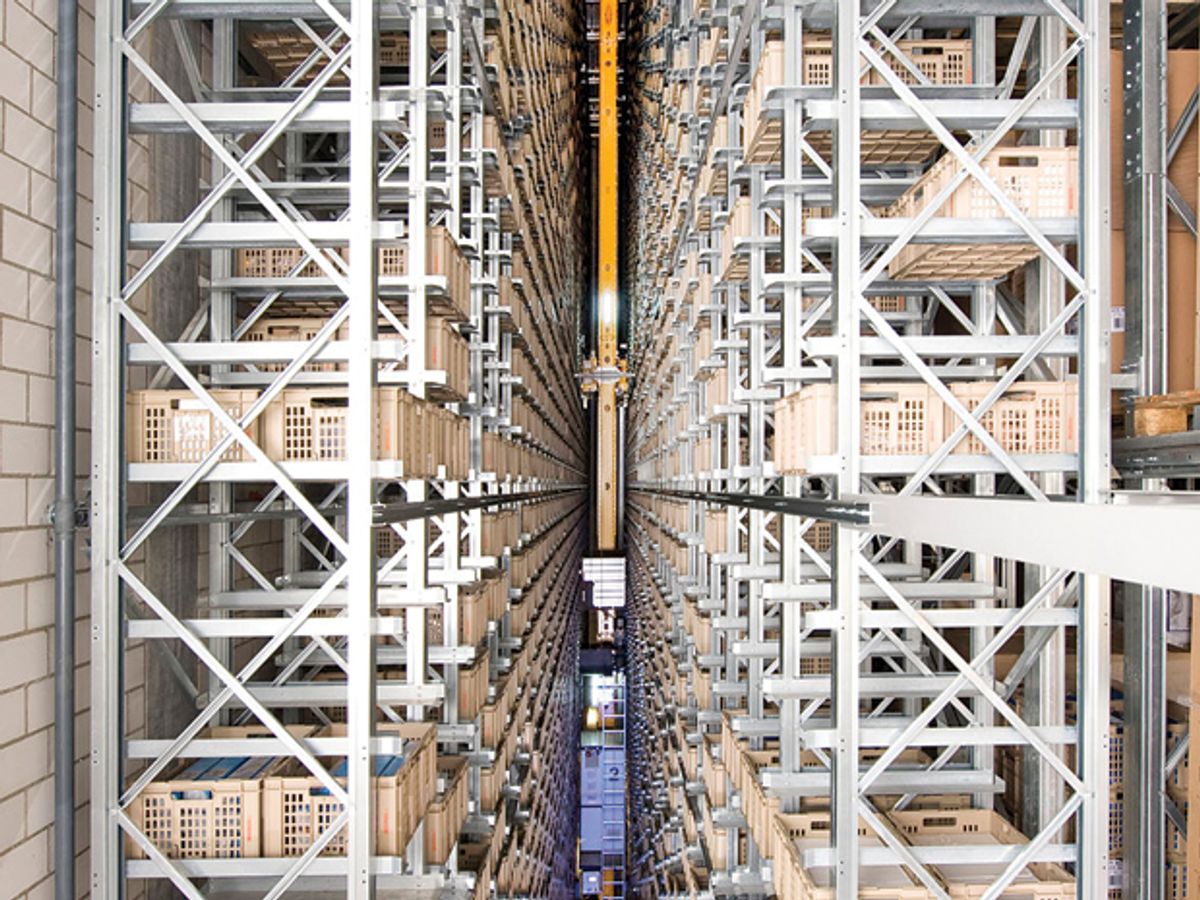Supplying electricity used to be so simple: some big coal plants, a few gigawatts of nuclear, maybe a hydroelectric dam for good measure—all of them capable of churning out a steady supply of watts. These days, more solar and wind energy means the electricity supply is often unpredictable and the power grid far more challenging to operate. A new project at a refrigerated warehouse in Switzerland could help meet that challenge.
The warehouse is operated by Migros, Switzerland’s largest supermarket chain. Located in Neuendorf, 60 kilometers west of Zurich, it’s a vast facility that stores goods heading for the company’s 630 stores. It’s also cold, with an average temperature of –28 °C maintained throughout the 200 000-square-meter space.
Beyond just keeping frozen pizza from spoiling, all that cold can be harnessed as a buffer for the grid. “In a sense, our deep-freeze warehouse stores energy in the form of coldness,” says Migros’s Roland Stadler. “With smart controls, we should be able to dynamically adapt the power consumption, to consume electricity when there’s enough power in the grid and not to consume when power is scarce.” The company is now doing just that through a partnership with IBM; BKW, the electricity utility for the Swiss canton of Bern; and Swissgrid, the national grid operator.
Here’s how it works: The first step is to forecast the warehouse’s electricity needs for the coming week based on the weather—freezers will obviously consume more watts on a humid August day than on a cold night in February—and on logistics like the amount and types of goods coming in by truck and train. MeteoSwiss, the national weather service, supplies weather data, as does a small weather station on site. IBM researchers also created a model of the warehouse’s typical electricity usage.
“Based on all those key factors, our system makes a forecast of the minimum energy consumption and the maximum consumption,” explains Doug Dykeman, a computer scientist at IBM Research–Zurich who is leading the project. The difference between the minimum and maximum is the warehouse’s “flexibility”—the amount of electricity that the company is willing to not consume should the need arise.
For the grid operator, the warehouse acts like a virtual battery, capable of delivering an amount of power equal to the flexibility. The energy forecast is broadcast to BKW and Swissgrid, says Dykeman. “They can then issue a command to Migros that basically says, ‘Okay, I need 10 percent or 100 percent of what you advertised.’ ” The entire system is automated; when the warehouse control systems receive a signal from BKW, they can respond by adjusting the compressors’ power consumption. BKW will cancel the signal when it no longer needs the electricity or when it detects the freezer temperature exceeding a certain level.
On average, the Neuendorf freezers consume about 500 000 kilowatt-hours per month. In initial tests in April, peak energy consumption was around 1000 kWh, and up to 900 kWh were available to balance the grid for limited periods—typically an hour.
The Migros warehouse isn’t the first to be used in this fashion. In 2008, for example, Amy’s Kitchen, an organic frozen food producer in Petaluma, Calif., retrofitted its freezers with a somewhat cruder system that could automatically reduce consumption during peak times. Sasank Goli, a program manager at Lawrence Berkeley National Laboratory (LBNL), in California, has studied the technology, known generally as automated demand response. His group found that with the tariff reductions from the utility, the food maker’s investment paid off within a year. [PDF] “And the utility benefits because they don’t need to build more capacity,” he says.
Right now, Goli says, few companies are using the technology. “There’s always some reticence to adopt what is perceived to be somebody else controlling your facility,” he says. But if every industrial freezer in California were to implement the technology, up to one-fourth of the freezers’ total load of 360 megawatts could be available for demand response [PDF], according to a study that Goli’s group did in 2011. To further that vision, LBNL helped develop an open-source communications standard called OpenADR, to facilitate automated demand response.
The main difference between the Swiss installation and others is that the former is “smarter”: It predicts how much load the facility can comfortably shed and monitors the site’s response in real time. IBM hopes that the pilot project, which runs through the end of this year, will convince other industrial users that the technology is feasible and won’t impede operations or the bottom line.
For Migros, cost savings are only part of the motivation, says Stadler. The larger goal is to support Europe’s energiewende, a German phrase meaning “energy turnaround” that has come to signify the move away from nuclear power and toward renewables. The Neuendorf plant recently installed Switzerland’s largest array of rooftop photovoltaics, for example.
“It’s a motivation to take on our responsibility to society,” Stadler says.
Jean Kumagai is the Executive Editor at IEEE Spectrum. She holds a bachelor's degree in science, technology, and society from Stanford University and a master's in journalism from Columbia University.



